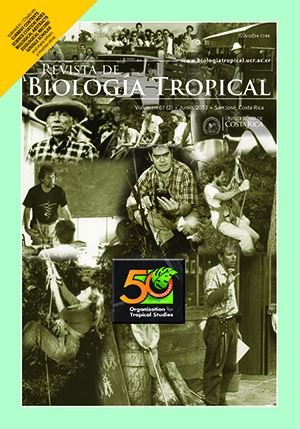Abstract
The queen conch Eustrombus gigas is an important fisheries resource in the Caribbean region. In Cuba Island the studies about this resource are very scarce and particularly in the Southeastern regions of the country. With the aim to get important fishery informa- tion about this gastropod, adult Queen Conch density and frequency of reproductive activity were evaluated in Cabo Cruz, Cuba, during 2009-2010. Data from three seasons were obtained (rainy, dry and cold fronts periods) from three different areas: Farito, Guafe and Laguna. The highest density was observed in cold fronts season (468.5ind./ha) and the lowest occurred during the dry season (268.5ind./ha). The highest density was reported at Laguna (520.4ind./ha) and the lowest at Farito (290.9ind./ha). In total, 158 reproductive events were observed. The highest frequency was reported in rainy season (36%), followed by dry (9%) and cold fronts (5%) seasons. Reproductive behavior (mating and egg laying) was related to temperature and photoperiod. Reproductive activ- ity was observed during the whole year, which suggests the existence of an important Queen Conch reserve in the Southeastern region of Cuba and an apparently self-sufficient population for recruitment. From our results we may conclude that, the population’s sustainable exploitation is viable if the following management measures are observed: functional zoning within the area, rotation of fishing areas and a closed season. We recommend that the Laguna site should be protected as a reproduction zone and banned for fishing activities.##plugins.facebook.comentarios##
Downloads
Download data is not yet available.






